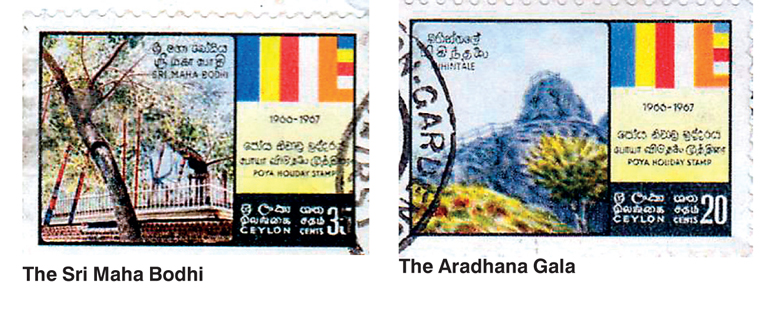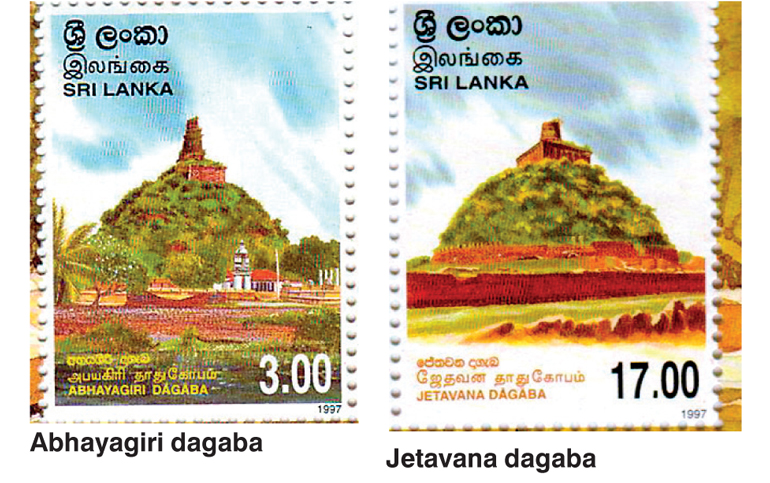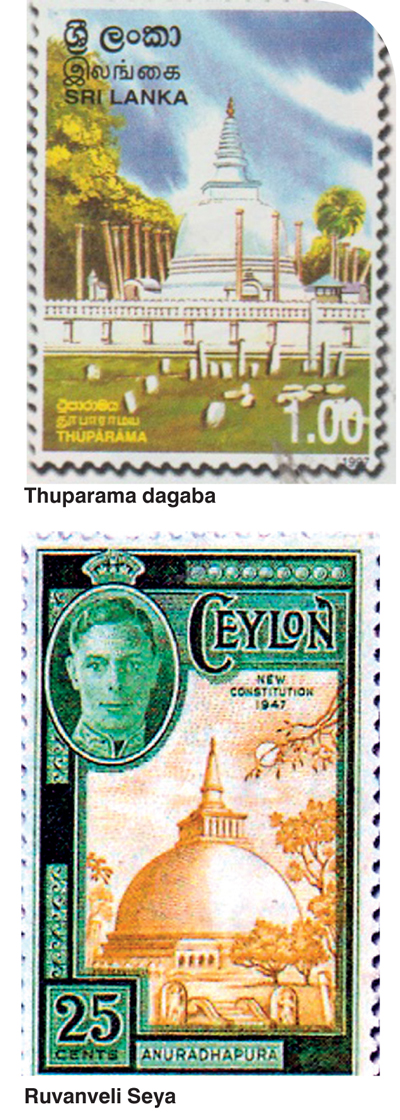Saturday Apr 19, 2025
Saturday Apr 19, 2025
Saturday, 18 June 2016 00:00 - - {{hitsCtrl.values.hits}}

 Anuradhapura is the focal point during Poson alongside Mihintale. Tens of thousands of pilgrims flock to the sacred city which became the ‘City of Buddhism’ after the arrival of Arahant Mahinda in the 3rd century BC.
Anuradhapura is the focal point during Poson alongside Mihintale. Tens of thousands of pilgrims flock to the sacred city which became the ‘City of Buddhism’ after the arrival of Arahant Mahinda in the 3rd century BC.
Being a vast city, Anuradhapura provides ample space for the pilgrims to rest. The ‘vandana nades’ carry utensils to cook, very often occupying open spaces in the sacred city areas close to the tanks. They have a dip in the tank and refresh themselves before proceeding to ‘Atamasthana’ – the eight places of veneration.
It is customary to start the ‘vata vandanawa’ by worshipping the Sri Maha Bodhi, the most sacred spot in Anuradhapura. The sacred Bo tree (ficus religiosa) planted over 2,500 years ago during the time of King Devanampiya Tissa (250-210 BC), is the right branch of the very tree beneath which Prince Siddhartha gained Enlightenment in Buddhagaya in North India. The Sri Maha Bodhi was one of four sacred places featured in the set of stamps released on 2 January 1967 to mark the inauguration of Poya holidays in Sri Lanka.
Another featured the ‘Aradhana Gala’ at Mihintale, the spot where Arahant Mahinda appeared when King Devanapiya Tissa was on a hunting expedition with his retinue. (The other two stamps were Sri Pada and devotees worshiping at a temple on a Poya day).
Ruvanveli Seya, the most venerated dagaba in Anuradhapura, being walking distance from the Sri Maha Bodhi, all pilgrims do a quiet stroll. In an evening it’s a very pleasant walk, enjoying a cool breeze after a warm afternoon. The devotee walks several times round the stupa chanting stanzas and retires to a corner in the spacious ‘maluwa’ to meditate undisturbed.
The Great Stupa was built by Warrior King Dutugemunu (161-137 BC). The Maha Stupa, as it is popularly referred to, with a circumference of 370 feet, is a bubble in shape and consists of three terraces. It stands at a height of 180 ft.
The stupa was first used on one of the four stamps issued to mark the 1947 Constitution which introduced the parliamentary system of government. That is how the British monarch, George VI, appears in the stamp.
The Thuparama dagaba, the first stupa to be built in Sri Lanka, was how King Devanampiya Tissa provided the newly-converted Buddhist public with a place to pay reverence to the Buddha. The collar-bone of the Buddha has been enshrined in the stupa, which formed the nucleus of a monastery occupying an area of 3.5 acres.
The dagaba, originally in the shape of a heap of paddy was on a circular platform of 164.5 feet in diameter and rose to a height of 11.4 feet. It went into ruins after the collapse of the Anuradhapura kingdom. Renovations were done during the British administration after which it took the present bell shape around 1882. Presently its diameter is 59 ft and the height is 63 ft. It was one of four dagabas featured in the 1997 Vesak stamps.
The Abhayagiri dagaba, which has now been completely renovated, was in a dilapidated state for many decades as is seen in the one of the Vesak stamps of 1997. It was the work of King Vattagamni Abhaya (103-102 BC) and is the second largest monument of its kind in Sri Lanka. The dagaba along with its monastery formed the centre of the largest and one of the oldest such complexes in Anuradhapura. The stupa is 235 feet in height and has a diameter of 310 feet.
The Jetavana Dagaba (right) remains the tallest stupa in the world with a height of nearly 400 feet. It was built by King Mahasena (276-303 CE). Renovations are underway from the ruined state it was in as seen in the stamp – another of the 1997 Vesak stamps. The entire structure had occupied around 82 acres of land, larger than all but two pyramids. Its present height is estimated to be 232 feet and the diameter 367 feet.

Discover Kapruka, the leading online shopping platform in Sri Lanka, where you can conveniently send Gifts and Flowers to your loved ones for any event including Valentine ’s Day. Explore a wide range of popular Shopping Categories on Kapruka, including Toys, Groceries, Electronics, Birthday Cakes, Fruits, Chocolates, Flower Bouquets, Clothing, Watches, Lingerie, Gift Sets and Jewellery. Also if you’re interested in selling with Kapruka, Partner Central by Kapruka is the best solution to start with. Moreover, through Kapruka Global Shop, you can also enjoy the convenience of purchasing products from renowned platforms like Amazon and eBay and have them delivered to Sri Lanka.
Discover Kapruka, the leading online shopping platform in Sri Lanka, where you can conveniently send Gifts and Flowers to your loved ones for any event including Valentine ’s Day. Explore a wide range of popular Shopping Categories on Kapruka, including Toys, Groceries, Electronics, Birthday Cakes, Fruits, Chocolates, Flower Bouquets, Clothing, Watches, Lingerie, Gift Sets and Jewellery. Also if you’re interested in selling with Kapruka, Partner Central by Kapruka is the best solution to start with. Moreover, through Kapruka Global Shop, you can also enjoy the convenience of purchasing products from renowned platforms like Amazon and eBay and have them delivered to Sri Lanka.